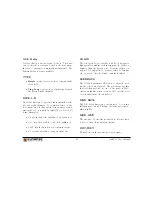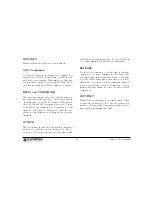
SYMMETRY
Offsets the signal before the distortion stage. This will
introduce even order harmonics and change the timbre
of the sound. Note that changing symmetry can result
in silence if the signal level is too low. Increase the
drive knob in such cases.
TONE
The tone control processes the signal after it has been
distorted. It changes the mid frequencies of the dis-
torted sound and thus the overall timbre of the effect.
LOW CUT
Use the low cut filter to roll off low frequencies, to
remove any mud in the bass region.
HIGH CUT
Use the high cut filter to roll off high frequencies, often
useful to reduce the harshness of the distortion effect.
DRY/WET
Blends between the dry and processed signal. Com-
bined with the Drive knob, the distortion can be tamed
where needed.
3.8.4 Phaser
A phaser modifies a signal with a series of filters and
then mixes it with the dry signal. The cutoff frequency
of the filters is continuously varied.
STAGES
Sets the number of phaser stages (2, 4 or 6). More
stages result in a more distinct phasing sound, while
less stages sound more subtle.
FREQ
Adjusts the bottom frequency for the phaser. This is
the lowest frequency the phaser will sweep to.
SPREAD
Use this parameter to spread the filter poles, which
will change the overall timbre of the phasing effect.
FEEDBK
The output of the phaser can be fed back into the
input, making the overall phasing effect a lot more
pronounced. Both positive and negative feedback is
allowed.
20
Antidote User’s Manual
Summary of Contents for Antidot
Page 1: ...User s Manual...
















































